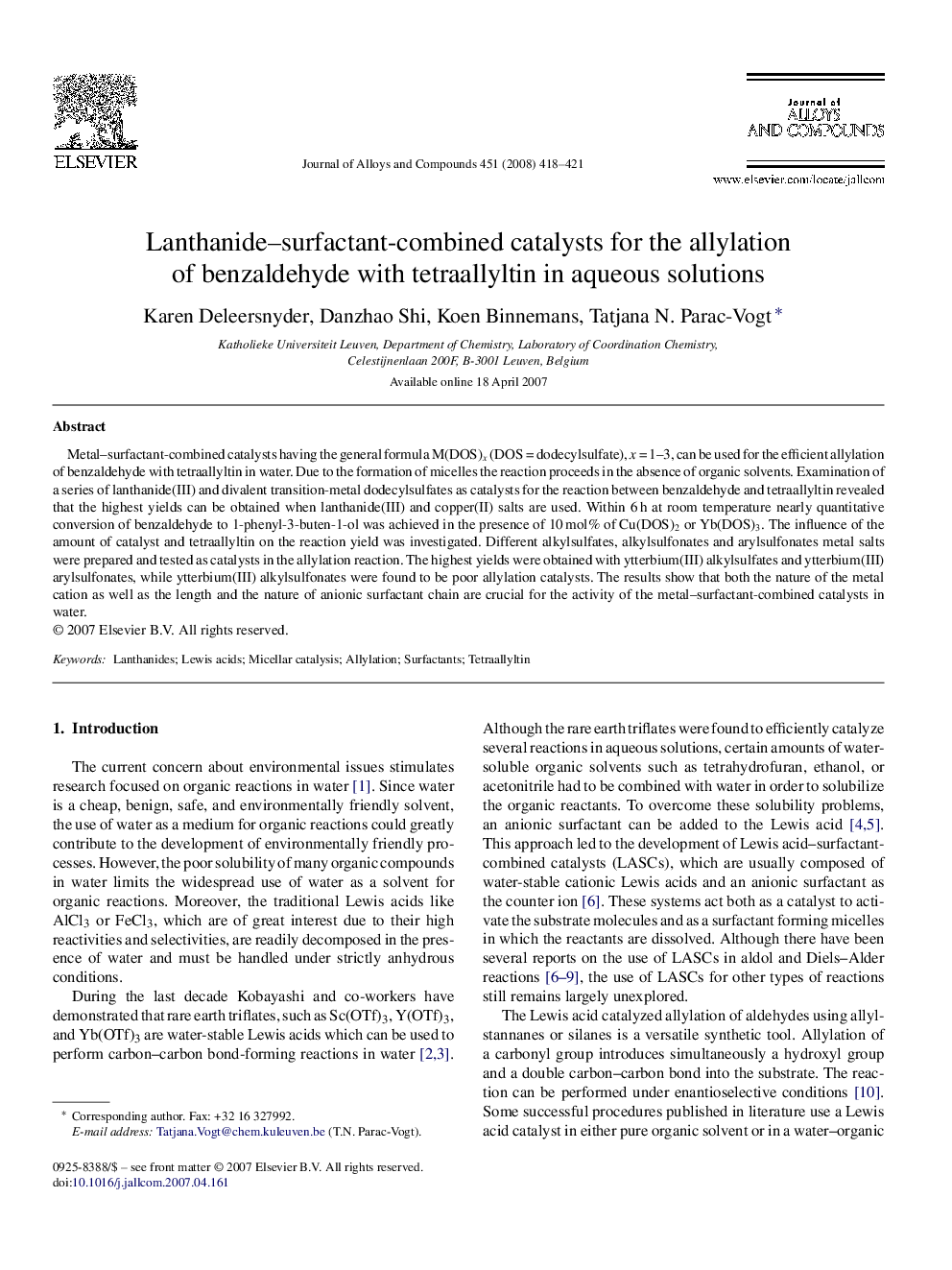| Article ID | Journal | Published Year | Pages | File Type |
|---|---|---|---|---|
| 1625143 | Journal of Alloys and Compounds | 2008 | 4 Pages |
Metal–surfactant-combined catalysts having the general formula M(DOS)x (DOS = dodecylsulfate), x = 1–3, can be used for the efficient allylation of benzaldehyde with tetraallyltin in water. Due to the formation of micelles the reaction proceeds in the absence of organic solvents. Examination of a series of lanthanide(III) and divalent transition-metal dodecylsulfates as catalysts for the reaction between benzaldehyde and tetraallyltin revealed that the highest yields can be obtained when lanthanide(III) and copper(II) salts are used. Within 6 h at room temperature nearly quantitative conversion of benzaldehyde to 1-phenyl-3-buten-1-ol was achieved in the presence of 10 mol% of Cu(DOS)2 or Yb(DOS)3. The influence of the amount of catalyst and tetraallyltin on the reaction yield was investigated. Different alkylsulfates, alkylsulfonates and arylsulfonates metal salts were prepared and tested as catalysts in the allylation reaction. The highest yields were obtained with ytterbium(III) alkylsulfates and ytterbium(III) arylsulfonates, while ytterbium(III) alkylsulfonates were found to be poor allylation catalysts. The results show that both the nature of the metal cation as well as the length and the nature of anionic surfactant chain are crucial for the activity of the metal–surfactant-combined catalysts in water.
